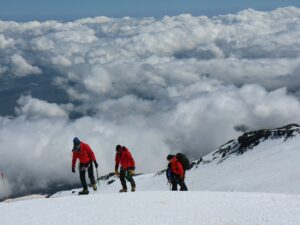Best Exercises to Prepare for Kilimanjaro: Conquer the Roof of Africa with Guides of Africa
Climbing Mount Kilimanjaro, the majestic ‘Roof of Africa,’ is more than just a trek; it’s a journey that takes you through diverse ecosystems, breathtaking landscapes, and the exhilarating challenge of reaching the summit at 5,895 meters (19,341 feet). As you prepare for this once-in-a-lifetime adventure, the right physical preparation is essential. At Guides of Africa, we understand that a successful climb starts long before the trailhead. With our expertise, we aim to guide you not just to the summit but through an inspiring journey that will change your life forever.
In this article, we will explore some of the best exercises to prepare for your Kilimanjaro ascent, helping you build endurance, strength, and confidence. So, lace up your hiking boots, and let’s get started!
Why Physical Preparation is Crucial
Before diving into exercises, let’s talk about why preparing your body is vital. Climbing Kilimanjaro is physically demanding. The high altitude can lead to altitude sickness if your body isn’t acclimatized. A solid fitness foundation can help your body cope with these challenges. The better prepared you are, the more you’ll enjoy the experience—taking in the stunning views, connecting with fellow climbers, and savoring every step of this epic adventure.
The Best Exercises to Prepare for Kilimanjaro
Here are some effective exercises designed to enhance your stamina, strength, and overall fitness level, ensuring you’re physically prepared for the Kilimanjaro challenge.
1. Cardio Workouts
Hiking
Outdoor hiking is the most effective way to prepare for the Kilimanjaro trail. Aim for regular hikes on varied terrains, especially uphill. Incorporate hikes of different lengths and elevations, gradually increasing the difficulty as you progress. This will not only improve your cardiovascular health but also strengthen your legs and enhance your endurance.
Running
Running is another fantastic cardio option. Start with shorter distances and gradually increase your mileage. Focus on interval training—alternate between high-intensity sprints and moderate jogging. This mimics the varying pace you’ll experience on the mountain and boosts your aerobic capacity.
Cycling
Cycling, whether on a stationary bike or outdoors, is a low-impact way to build your cardiovascular fitness. Aim for longer rides at a steady pace as well as some intervals to mimic the intensity of climbing. The leg strength you gain from cycling will benefit your uphill trekking.
2. Strength Training
While cardiovascular fitness is vital, strength training should not be overlooked. Building core and leg strength will keep you stable and reduce the risk of injury during your climb.
Squats
Squats target your quadriceps, hamstrings, and glutes—muscles you’ll rely on heavily while climbing. Perform different variations, such as bodyweight squats, goblet squats, and jump squats, to add variety to your routine.
Lunges
Lunges work on balance and coordination, essential for uneven terrain. Incorporate forward, backward, and lateral lunges into your training to engage all the muscles in your legs.
Core Exercises
A strong core is crucial for maintaining balance, especially as you navigate challenging trails. Incorporate planks, Russian twists, and bicycle crunches into your routine. Strong core muscles will also help with your posture and stability on the trek.
3. Flexibility and Balance
Flexibility and balance are vital components of your preparation. They enhance your agility and help prevent injuries.
Stretching
Incorporate dynamic stretching into your warm-ups and static stretching into your cool-downs. Focus on hip flexors, hamstrings, quadriceps, and calves. Yoga can also be beneficial, improving your flexibility, balance, and mental focus.
Balance Exercises
Exercises such as single-leg stands, stability ball exercises, or using balance boards can help improve your stability. This is crucial for navigating rocky or uneven sections of the Kilimanjaro trail.
4. Altitude Training
If possible, consider training at higher elevations to acclimatize your body to lower oxygen levels. If you can’t access high-altitude locations, think about incorporating stair climbing into your workouts. This simulates the effort required for steep inclines.
5. Endurance Training
Finally, build your overall endurance with long, steady-state workouts. Aim for long hikes, runs, or bike rides at a comfortable but challenging pace. Gradually increase the duration as you get closer to your Kilimanjaro adventure.
Creating a Training Schedule
Now that you know the best exercises to prepare for Kilimanjaro, let’s put it all together into a training schedule. Ideally, you should start training at least 3-6 months before your trek.
Sample Training Schedule
Weeks 1-4: Base Building
- Monday: 30 mins cardio (running or cycling) + strength training (squats, lunges)
- Tuesday: 1-hour hike (flat terrain)
- Wednesday: Rest day
- Thursday: 30 mins cardio + core exercises
- Friday: 1-hour hike (inclines)
- Saturday: 1-hour yoga/flexibility training
- Sunday: Long hike (2-3 hours) on varied terrain
Weeks 5-8: Increasing Intensity
- Monday: 45 mins interval training (running or cycling) + strength training
- Tuesday: 1.5-hour hike (increased elevation)
- Wednesday: Rest day
- Thursday: 45 mins cardio + balance exercises
- Friday: 2-hour hike (inclines)
- Saturday: Core and flexibility training
- Sunday: Long hike (3-4 hours) with a weighted backpack
Weeks 9-12: Peak Training
- Monday: 1-hour interval training + strength training
- Tuesday: 2-hour hike (steep inclines)
- Wednesday: Rest day
- Thursday: 1-hour cardio + balance exercises
- Friday: 2.5-hour hike (elevation) with a weighted backpack
- Saturday: Flexibility and core training
- Sunday: Long hike (4-6 hours) on challenging terrain
Nutrition and Hydration
Remember, exercise alone won’t get you ready for Kilimanjaro! Nutrition and hydration play pivotal roles in your training and climbing experience.
- Stay Hydrated: Drink plenty of water during training and while on the mountain. Dehydration can lead to altitude sickness and fatigue.
- Eat Balanced Meals: Focus on a diet rich in carbohydrates, lean proteins, and healthy fats. Foods like whole grains, fruits, vegetables, and lean meats will fuel your body adequately for your training and climb.
Book Your Kilimanjaro Adventure with Guides of Africa
At Guides of Africa, we believe in creating unforgettable experiences tailored to your needs. Our expertly guided Kilimanjaro tours ensure that you not only reach the summit but also enjoy the breathtaking beauty and rich culture of Tanzania. With our knowledgeable guides, you’ll have the support you need throughout your journey, from preparation to the peak and back down again.
Don’t let the challenge of climbing Kilimanjaro deter you! With the right exercises, preparation, and the support of Guides of Africa, you can achieve this remarkable feat. So, get ready to challenge yourself, experience the beauty of Tanzania, and create memories that will last a lifetime.
For inquiries and bookings, reach out to us at info@guidesofafrica.com. Let’s embark on this incredible journey together!
Conclusion
Climbing Mount Kilimanjaro is a testament to your strength, determination, and love for adventure. By preparing adequately with the right exercises and training regimen, you’ll be setting yourself up for success. The summit awaits you, and with Guides of Africa by your side, your Kilimanjaro experience will be nothing short of extraordinary. Book your tour today, and let us help you achieve your dream of standing atop Africa!












